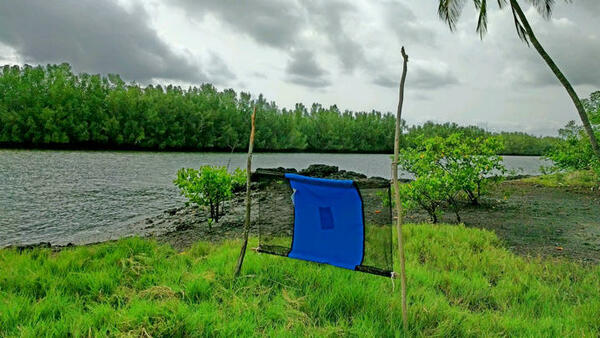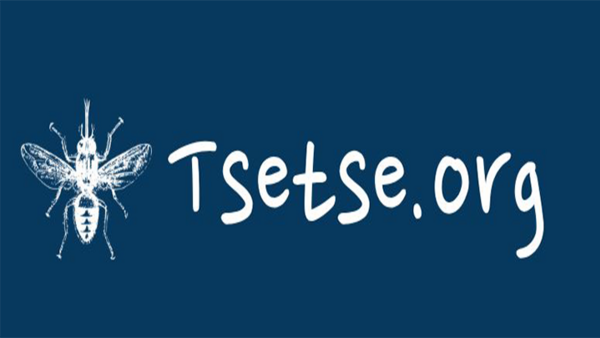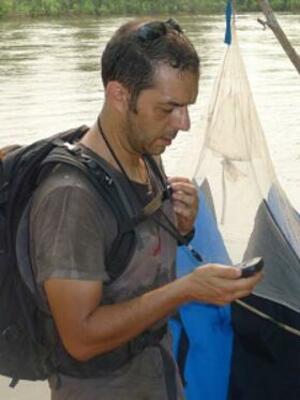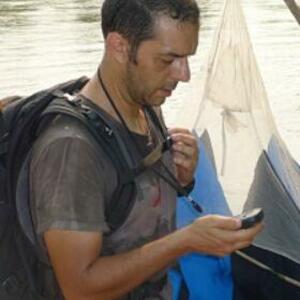
Eliminating sleeping sickness through vector control
Human African trypanosomiasis (HAT), a neglected tropical disease (NTD) transmitted by tsetse flies, threatens rural populations in 20 countries across sub-Saharan Africa. Devastating epidemics have occurred over the last 100 years - the most recent of which killed 0.5M people/year at its peak. There are no vaccines and disease management has relied on case detection and treatment – which is difficult in the remote settings where HAT occurs. Many cases are never detected and, without treatment, patients inevitably die.
Vector control offers the only means of protecting people from infection, but the standard methods of tsetse control were not cost-effective. Research by LSTM staff, working in close collaboration with partners from Africa and Europe, developed a simple and cost-effective method of tsetse control, Tiny Targets which overcomes some of the shortcomings of ‘screen-and-treat’ programmes. As a result, vector control has become an essential component of the global programme to eliminate HAT. First deployed in 2011, Tiny Targets have been successfully used to control tsetse in Chad, Cote d’Ivoire, DRC, Guinea, and Uganda, which between them account for more than 88% of cases reported in the last decade. The success of the pilot has led to the rapid scale-up of Tiny Targets and the adoption by national and global policy bodies.
Modelling on the addition of vector control with Tiny Targets to the standard test and treat strategies indicates that we can accelerate progress towards WHO elimination goals. Within some zones of DRC, analysis of likely progress suggests that HAT will not be eliminated until 2086 with the current drug-based strategies while vector control brings that elimination date to 2020.
The development of Tiny Targets, along with the other research carried out at LSTM, has brought vector control to the fore within HAT elimination strategies, providing a vital tool for the protection of around three million people who are at risk of sleeping sickness.
Research Outputs
Courtin, F., Camara, M., Rayaisse, J.-B., Kagbadouno, M., Dama, E., Camara, O., Traore, I.S., Rouamba, J., Peylhard, M., Somda, M.B., Leno, M., Lehane, M.J., Torr, S.J., Solano, P., Jamonneau, V., Bucheton, B., 2015. Reducing Human-Tsetse Contact Significantly Enhances the Efficacy of Sleeping Sickness Active Screening Campaigns: A Promising Result in the Context of Elimination. PLoS neglected tropical diseases 9.
Esterhuizen, J., Rayaisse, J.B., Tirados, I., Mpiana, S., Solano, P., Vale, G.A., Lehane, M.J., Torr, S.J., 2011. Improving the Cost-Effectiveness of Visual Devices for the Control of Riverine Tsetse Flies, the Major Vectors of Human African Trypanosomiasis. PLoS Negl Trop Dis 5.
Lindh, J.M., Torr, S.J., Vale, G.A., Lehane, M.J., 2009. Improving the Cost-Effectiveness of Artificial Visual Baits for Controlling the Tsetse Fly Glossina fuscipes fuscipes. PLoS Negl Trop Dis 3.
Shaw, A.P.M., Tirados, I., Mangwiro, C.T.N., Esterhuizen, J., Lehane, M.J., Torr, S.J., Kovacic, V., 2015. Costs Of Using "Tiny Targets" to Control Glossina fuscipes fuscipes, a Vector of Gambiense Sleeping Sickness in Arua District of Uganda. Plos Neglected Tropical Diseases 9.
Tirados, I., Esterhuizen, J., Kovacic, V., Mangwiro, T.N.C., Vale, G.A., Hastings, I., Solano, P., Lehane, M.J., Torr, S.J., 2015. Tsetse Control and Gambian Sleeping Sickness; Implications for Control Strategy. PLoS Negl Trop Dis 9, e0003822.
Tiny Targets – from a research project to large scale vector control implementation
Historically the control of Gambian Human African Trypanosomiasis (g-HAT) relied on case detection and treatment and vector control did not play a significant role as available methods were not cost-effective.
This led to an initiative by LSTM and international partners to develop new, low-cost tsetse control methods which resulted in the Tiny Target. Vector control is now a named tool in the WHO strategy for eliminating g-HAT and Tiny Targets are being used on a large scale across five countries which together account for over 80% of all g-HAT cases reported from 2009-2018.
Dr. Andrew Hope talks about the research that led to the development of Tiny Targets and then show how the technology has been quickly adopted and scaled up in the field, and the impact Tiny Targets are having.
Andrew has been working on tsetse control at LSTM since 2016 and is currently employed as a Programme Manager overseeing the implementation of Tiny Target projects in DRC and Uganda.
Targeting Tsetse
Scientists from the Vector Biology Department are working with partners from Africa and Europe, and are developing new methods of controlling tsetse.
Find out more about the research programme.
Tsetse.org
This website was developed by members and associates of the Vector Biology Department Programs and information to assist in the planning and implementation of tsetse control operations.
It was set up to provide practical tools to those who need to make decisions about tsetse control in the fight against trypanosomiasis, which affects both humans and animals. It provides a platform that includes decision tools, information about bait technologies, along with a number of frequently asked questions, all backed up with rigorous research from esteemed institutions worldwide.

























